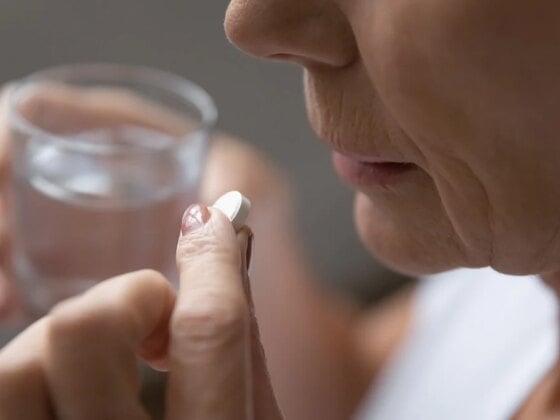Gray days, fewer daylight hours, and less sunshine mark the winter months. For some, winter triggers a specific type of depression called Seasonal Affective Disorder (SAD). SAD doesn’t occur exclusively in winter, though summer seasonal depression is less common. The causes of SAD are not precisely known. Research points to brain and hormonal changes at certain times of year.
In winter, it’s hypothesized that less sunlight leads to a decrease in serotonin, a chemical that regulates mood. Vitamin D also impacts serotonin activity, and is often insufficiently produced in the winter months. Commonly known as the “sunshine vitamin,” Vitamin D is naturally produced with direct sunshine exposure. Notably, SAD occurs less frequently in countries near the equator with abundant, year-round sunshine. Excessive sleepiness and lethargy may result when longer hours of darkness lead the body to produce more melatonin, a hormone that helps your body know when it’s time to sleep.
Some, but not all symptoms of summer SAD are the opposite of those occurring in winter. For example, instead of excessive sleepiness, longer days may result in not getting enough sleep. Melatonin supplements may be recommended to help your body get to sleep earlier and reset your body’s circadian rhythms. Loss of appetite and restlessness are also more pronounced in summer, possibly due to increased heat, humidity or even seasonal allergies.
SAD goes into remission with the change of seasons, but it shouldn’t be regarded as a less serious type of depression. SAD symptoms can leave you feeling hopeless, tense, and with less than normal interest in friends or activities.
SAD is more apt to affect young people, women, and those with a family history of depression. SAD goes into remission with the change of seasons, but it shouldn’t be regarded as a less serious type of depression. SAD symptoms can leave you feeling hopeless, tense, and with less than normal interest in friends or activities.
Winter SAD
Winter SAD symptoms may start as early as the fall, though it’s during the shortest days of the year in December and January when SAD symptoms often kick in more severely. Symptoms can include:
* fatigue/lack of energy
* trouble concentrating
* greater appetite
* increased desire to be alone
* greater need for sleep
* weight gain
Get professional help
The severity and duration of symptoms varies from person to person. A clinical diagnosis of SAD consists of two or more consecutive years of seasonal symptoms. That doesn’t mean you should wait two years to address what you know and feel is adversely affecting your well-being. If your depression lasts for more than two weeks, or seriously interferes with your ability to function at work, with your family, or social life, set up an appointment with your doctor or a mental health professional as soon as possible for evaluation.
Asking for help with a mental health issue is difficult for some people. Going to the doctor to treat a physical condition is universally accepted, but some still hold on to the idea that mental ailments should be toughed out alone. Remember that seeking treatment demonstrates you have the strength and intelligence to work toward a healthier, happier you. And social and cultural norms have significantly shifted in recent years toward understanding the value of getting professional mental health care.
Treatment for winter SAD
After an evaluation, your doctor may recommend the following for winter SAD:
Light therapy. Light boxes, which emit a full-spectrum light to mimic natural daylight, are often recommended to combat winter SAD. They can be purchased without a prescription, but see your doctor to discuss individual health factors that may impact proper usage. For example, if you’ve been diagnosed with bipolar disorder, the light could potentially trigger a manic episode. The therapy works by sitting a few feet from the light for anywhere from 20-60 minutes per day. While research is limited, it appears that exposure to this type of light causes a change in brain chemicals linked to mood.
Mental health therapy. There are many types of psychotherapy, and a common approach to cope with SAD is called cognitive behavioral therapy (CBT). You’ll learn to curb negative thinking and behavior and to deal with stress in positive ways. Health insurance coverage for mental health services varies, so check your individual plan. Free or low-cost mental health programs are often available through state and county agencies.
Medication. A doctor may prescribe an antidepressant medication, especially when symptoms are severe. An FDA-approved antidepressant that may help alleviate SAD symptoms is the extended-release version of bupropion (Wellbutrin XL, Aplenzin). It can take several weeks before you feel the full effect of medication. You may need to try different antidepressants to find the one that works for you, and that you tolerate with few side effects.
Coping with winter SAD
In addition to professional treatment, these strategies can help when coping with winter SAD. It may be hard to motivate yourself when you’re depressed, but these simple actions can help lift the dark clouds dampening your spirits:
- Expose yourself to as much natural light as possible. Go outside for a short walk if conditions such as ice and snow don’t present a hazard. Get out early in the morning to maximize the amount of natural light you’re exposed to. Open blinds and drapes and sit near a window with plenty of natural light.
- Exercise regularly. Exercise boosts feel-good brain chemicals such as serotonin and endorphins. Aim for 30 minutes of activity for most days.
- Find social support. Social activities and regular activities are important to well-being. Connect with people you enjoy being around. Sharing laughter is a great way to improve your mood.
- Eat right. Craving sugary carbohydrates is a common SAD symptom. These foods tend to exacerbate poor health generally and are also associated with energy crashes that leave you feeling sapped. Make exploring healthy food choices a type of fun adventure.
- De-stress. Make room for positive thoughts. Consciously push out negative emotions and replace them with the things that bring joy into your life. Check your local library or the internet for materials to help you meditate or discover other relaxation techniques. It’s free!
Get immediate help for suicidal thoughts
Don’t wait for an appointment if suicidal thoughts or feelings surface. Call 911 or go to an emergency room and ask for help. The National Suicide Prevention Lifeline at 1-800-273-TALK is available for confidential help 24/7 with trained counselors. Remember that people want to support you through your difficulties, and you will feel better.



